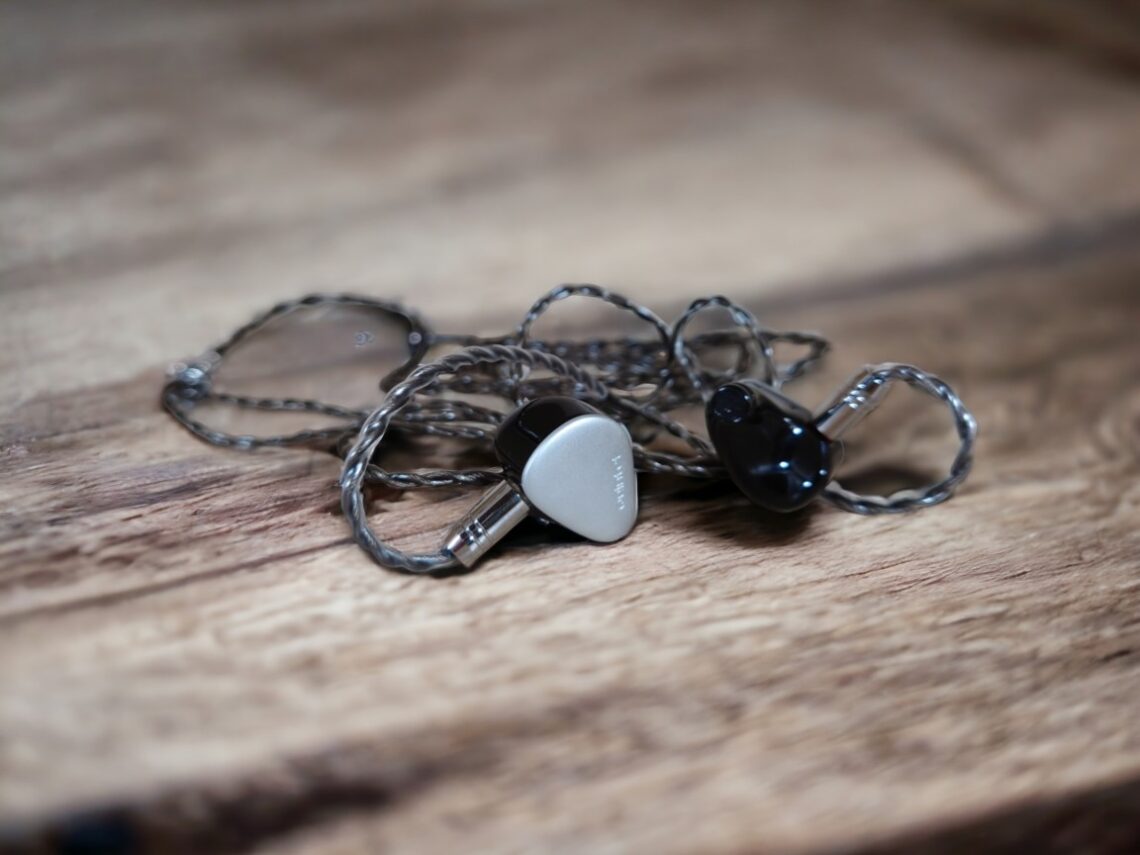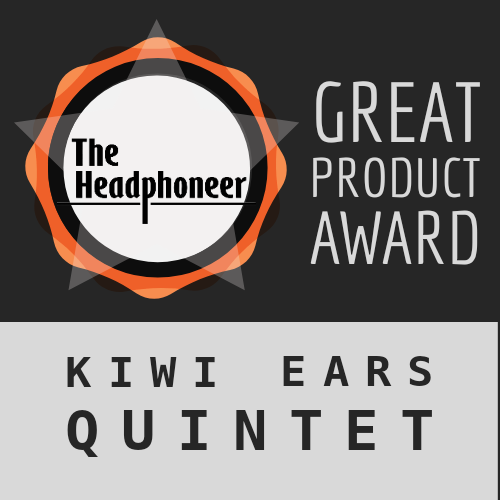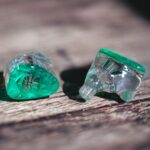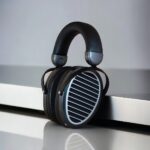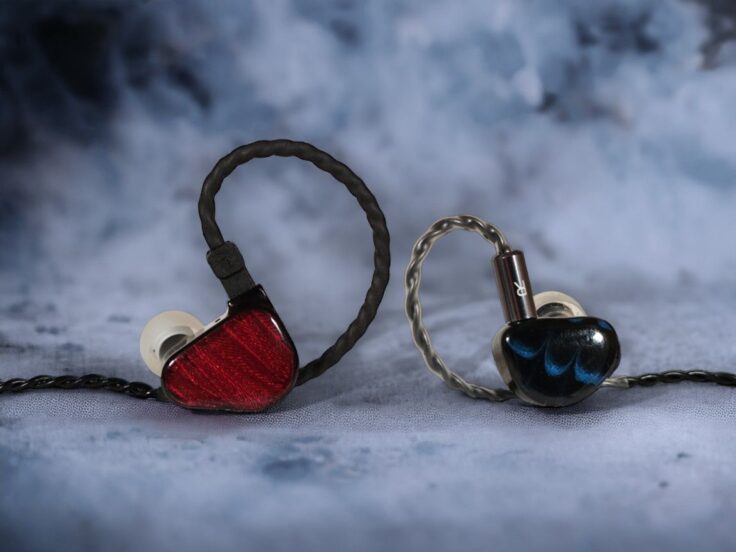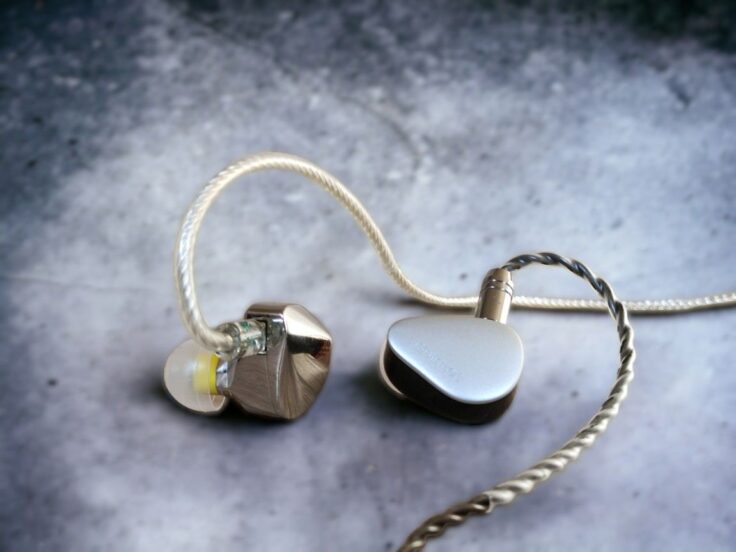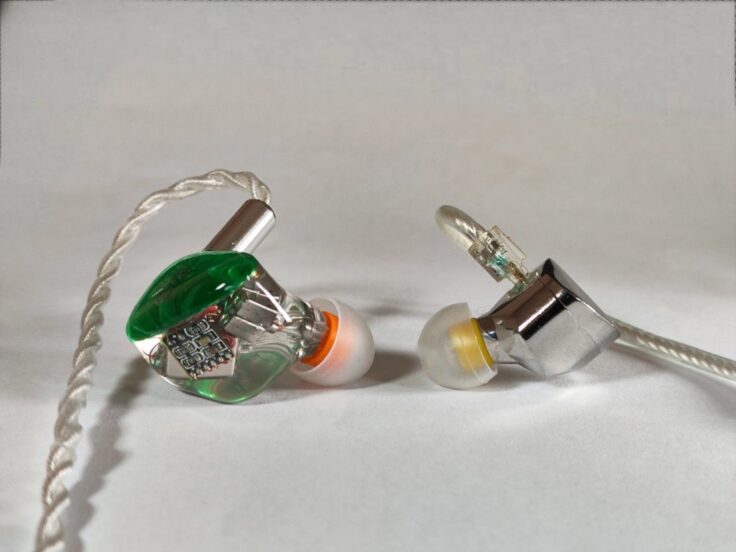As the name suggests, the Quintet has 5 drivers per side. There are 4 different types of drivers: 1 Diamond-Like Carbon (DLC) dynamic driver, 2 balanced armature (BA) drivers, 1 planar magnetic driver, and 1 piezoelectric (PZT) bone conductor.
A large 10mm DLC driver works as the sub-woofer. DLC’s high responsiveness and tensile strength makes it able to deliver tight and controlled bass. Two Knowles balanced armature drivers take care of the midrange.
For the treble, Kiwi Ears introduces a new 5mm planar tweeter system in the Quintet: “… The MPT (Micro Planar Transducers) is a new driver technology for the IEM industry. These new tweeters feature the classic planar magnetic driver circuitry but with a smaller footprint for use in hybrid designs. With an extremely low noise floor and high output capacity, these planar magnetic drivers deliver crisp and detailed treble that is unique from typical BA or EST (electrostatic) tweeters used in most IEM’s today… “
To give extra air and micro detail to the treble, the Quintet features an extra tweeter in the form of a piezoelectric bone conductor driver.
Kiwi Ears spent almost a year struggling to combine all of its driver types to get the desired result. They wanted a balanced and neutral tonality and at the same time get the best qualities from each driver.
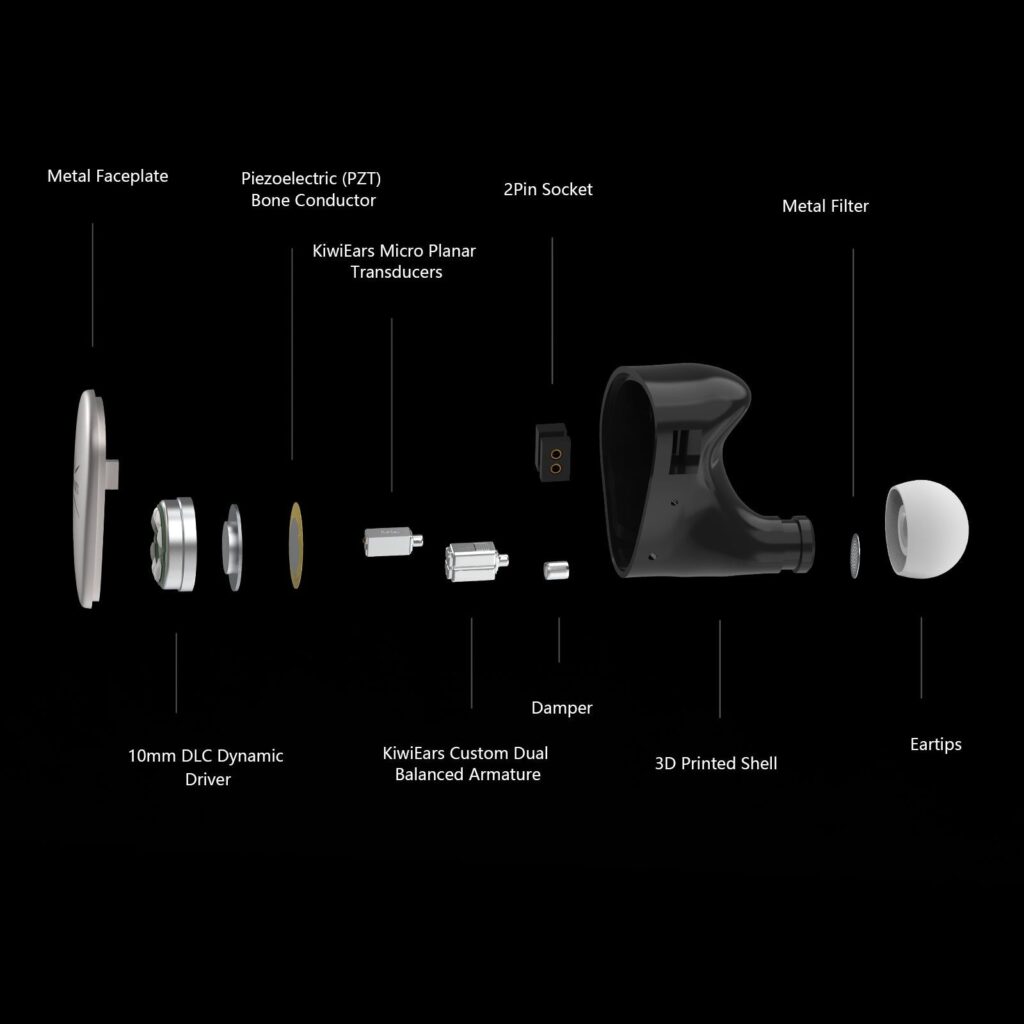
Here’s what Kiwi Ears has to say about combining the drivers: “…The sub-bass hits strong and fast, with a 9dB shelf that transitions into a flat mids at 300Hz. This mids-bass transition ensures that there is a slight warmth in the lower mids for bass guitar notes to be in the mix, but still retain a studio-monitor-like neutrality to the upper mids…The treble accurately peaks at 3kHz to match the acoustic perception of the human ear’s pinna, with a gradual decay into the upper treble. Thus, the treble is well-detailed and sparkles, but without any shrillness or harshness. The planar and PZT drivers provide a good extension into the treble until 40kHz, making a higher sense of resolution, airy atmosphere, and soundstage…”
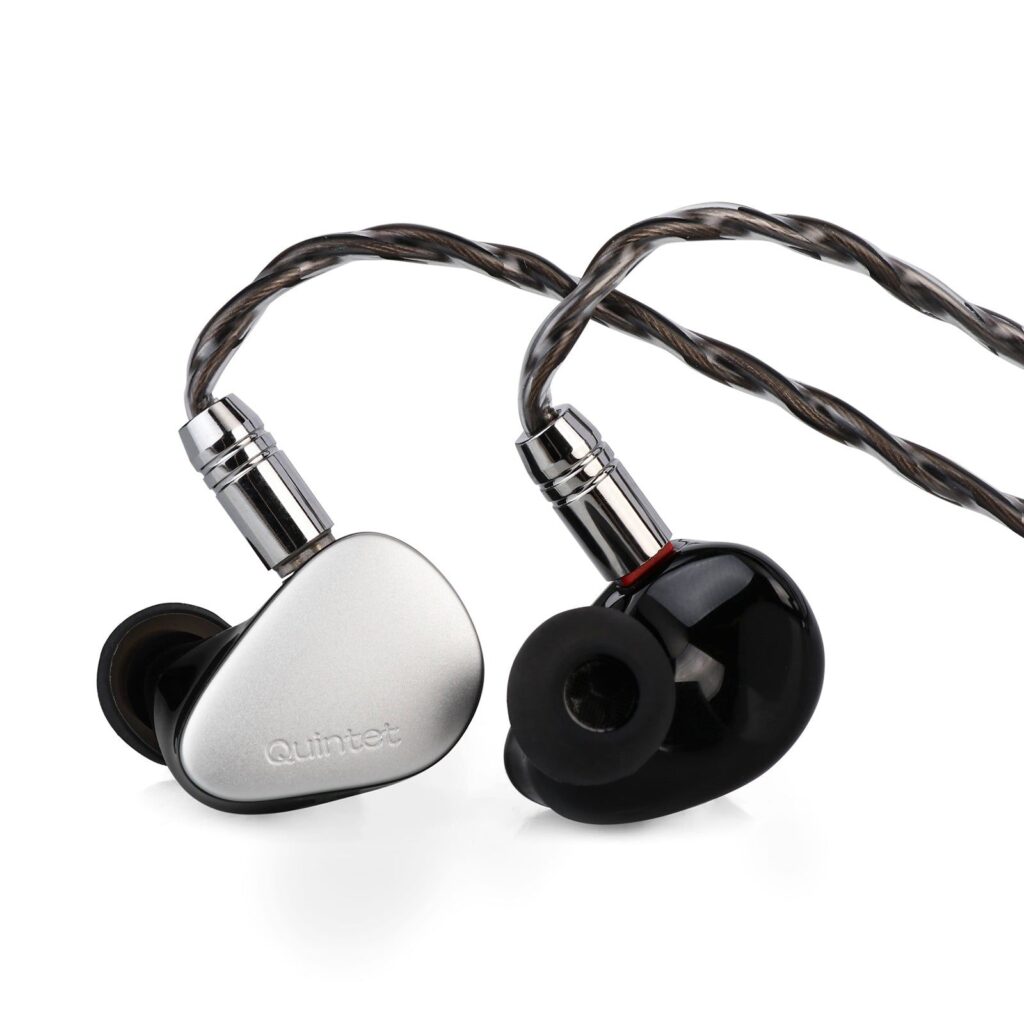
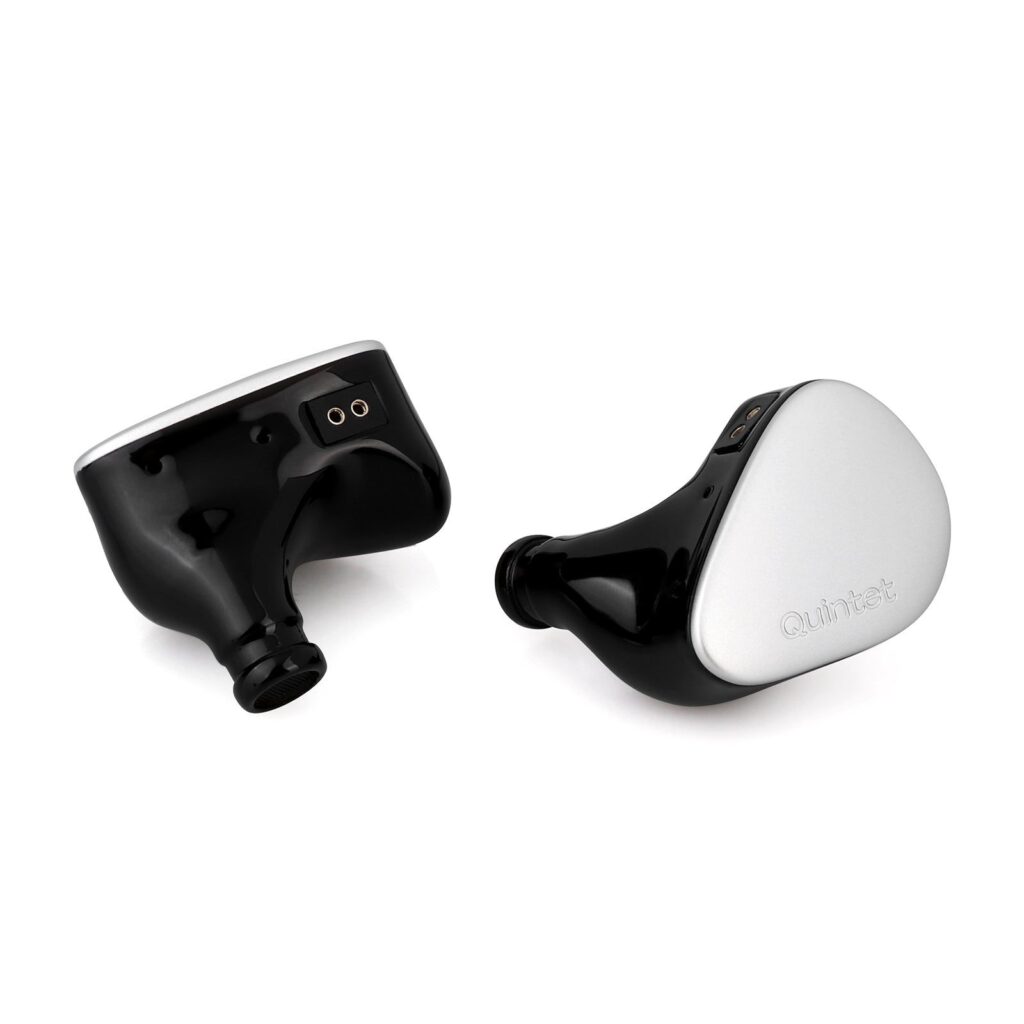
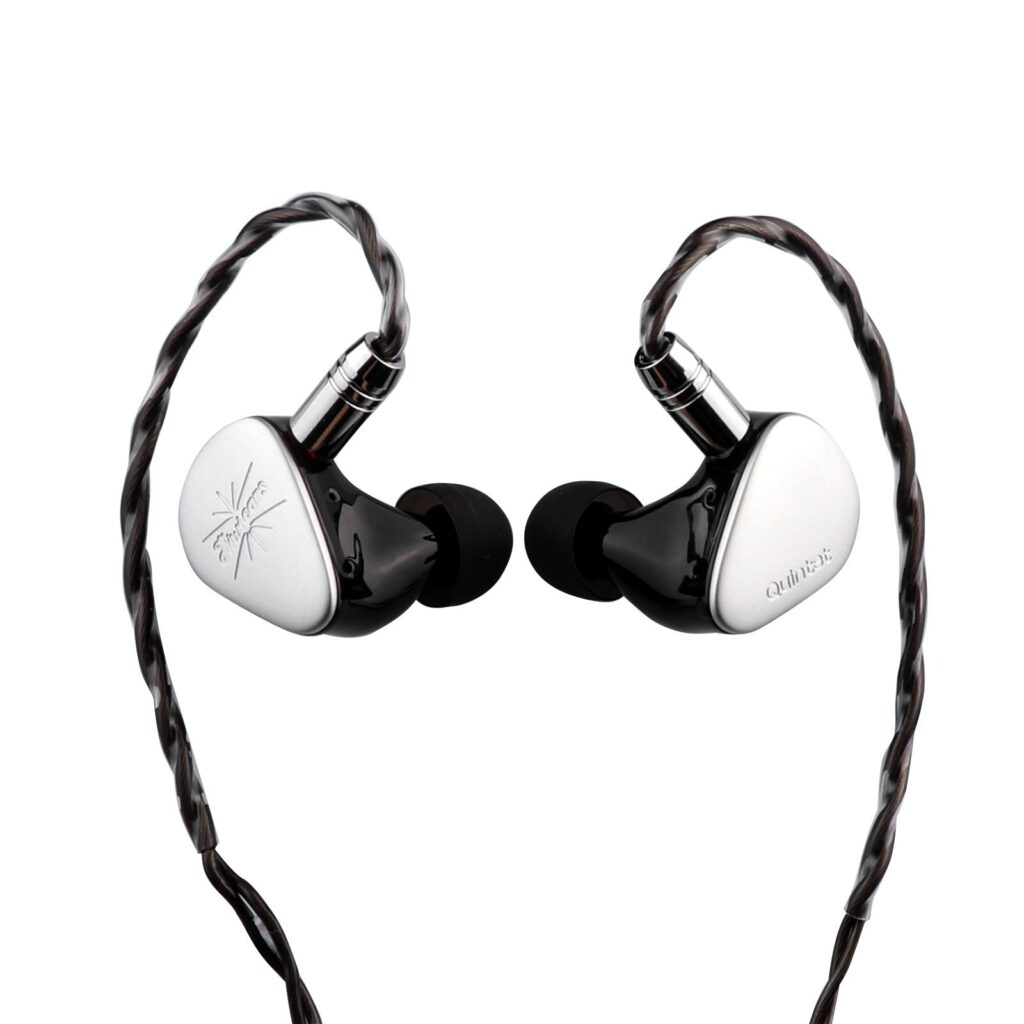
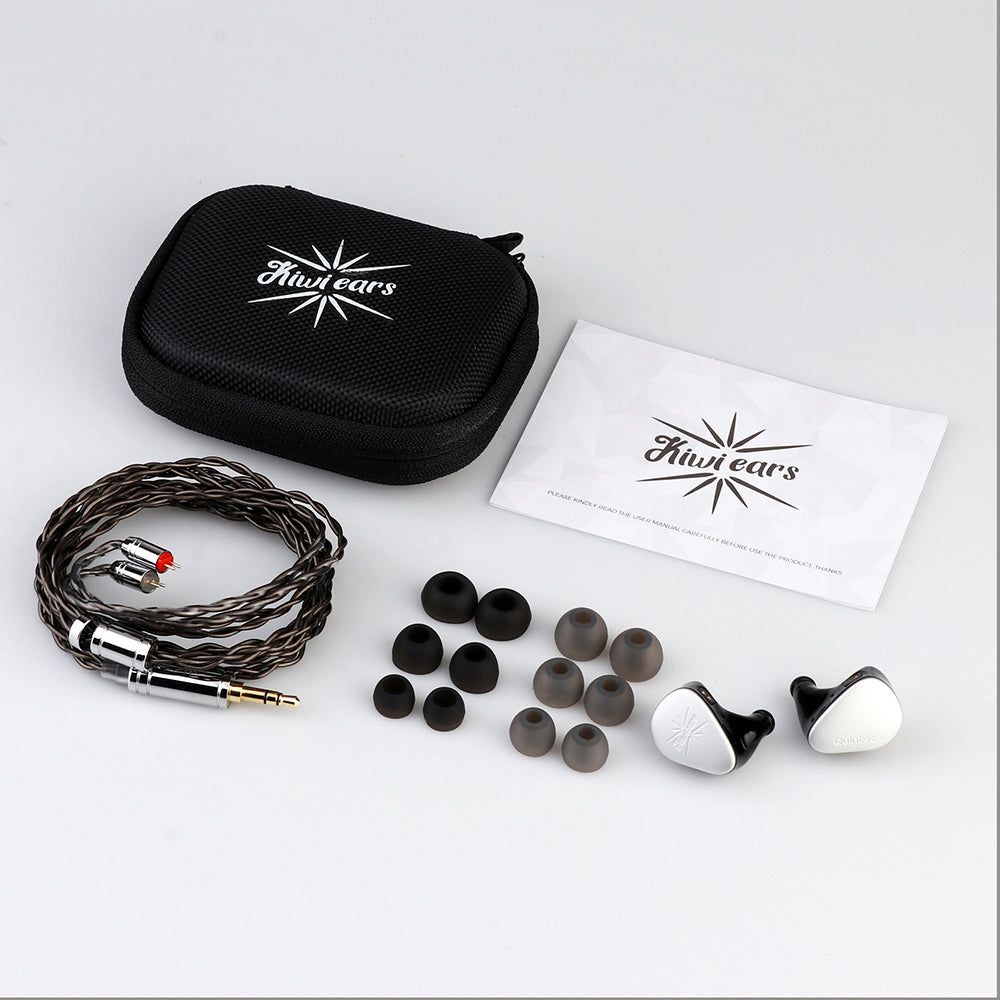
KIWI EARS QUINTET SPECIFICATIONS
BUILD AND COMFORT
- Drivers: 1 Diamond-Like Carbon (DLC) dynamic driver, 2 balanced armature (BA) drivers, 1 planar magnetic driver, and 1 piezoelectric (PZT) bone conductor
- Impedance 32 Ohms
- Sensitivity: 106 dB
- Included cable: 1.2 m Detachable Silver-Plated OFC Cable
- Cable plug type amp: 3.5mm
- Cable plug IEM: Detachable 0.78mm 2 Pin
- Tips: Silicon type, 3 sizes, 2 types
- Carrying pouch included
The Quintet is made of 3D printed resin and has a metal faceplate. It is very light and quite small, and sits comfortably in the ear. I like the cable and there is a compact carrying pouch included.
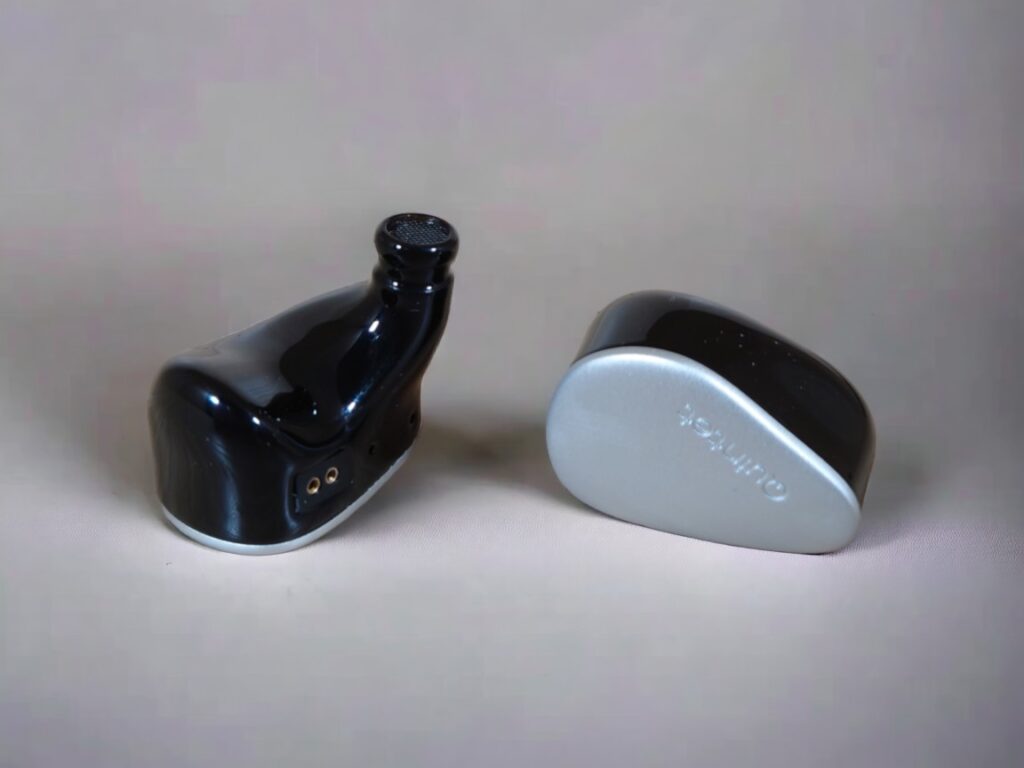
LISTENING IMPRESSIONS
Amplifier used was the class A Rebel Amp, the source was the RME ADI-2 DAC FS
All For Us by Labrinth. The first thing that strikes me is how textured and detailed the bass is. It’s very controlled, present but not too much. The vocals are clear and well balanced, the treble is clear but not too bright.
Escape Route by Boris Blank. Also here, the bass is impressively tight and extremely well behaved without being lean. There’s plenty of detail in the upper registries too.
Aubade by Trio 3. The soundstage is very airy. I find the frequency spectrum well balanced. The precision is snappy, the saxophone and piano are crisp and clear. The bass is tight and goes as deep as needed, but is definitely not overdone or bloated.
Fading Sorrow by Marcin Wasilewski Trio. All the percussion has lots of details, the treble is very clear and nuanced. I would call it textured rather than liquid. The midrange is crisp, with plenty of upper mids energy.
Higdon’s Fly Forward – Violin Concerto by Hilary Hahn. The violin has good texture. I’ve heard it warmer and lusher, though. This is a presentation that gives you more raw energy, bite and attack.
Holberg Suite by 1B1. Here the strings sound sweeter, with a pleasing tonality and good instrument separation.
Identikit by Radiohead. The bass is really punchy and it sounds and feels very physical even though it’s still not overly done. Very nice. Thom Yorke’s voice is very clear. The layering of instruments and vocals is rendered with precision.
Nevermind by Leonard Cohen. Mr. Cohen must have had one of the richest sounding voices in modern history. There’s so much texture and subtle nuances, and the Quintet reveasl more of them than most headphones. The bass is also great, as always.
Lovers on the Sun by David Guetta. This track is often painfully bright and harsh. Not with the Quintet. Actually, this is one of the few times I can remember to actually have enjoyed this track. The treble on isn’t too harsh and sibilance is under control. The bass is fantastically tight and utterly satisfying. Layering is also great.
Come Away With Me by Norah Jones. The bass is beautiful. The treble is clean and clear without being bright. The midrange is on the neutral side, slightly drier than I personally tend to like it. It’s got lots of information and is enjoyable on its own terms. It’s not very warm sounding.
Down by Stone Temple Pilots. Great presentation. The bass, the fuzz guitars, the vocals, the percussion. All is well balanced, separation is great. Sibiliance isn’t a problem. This song can often sound a bit too dry and sterile, but not with the Kiwi Quintet.
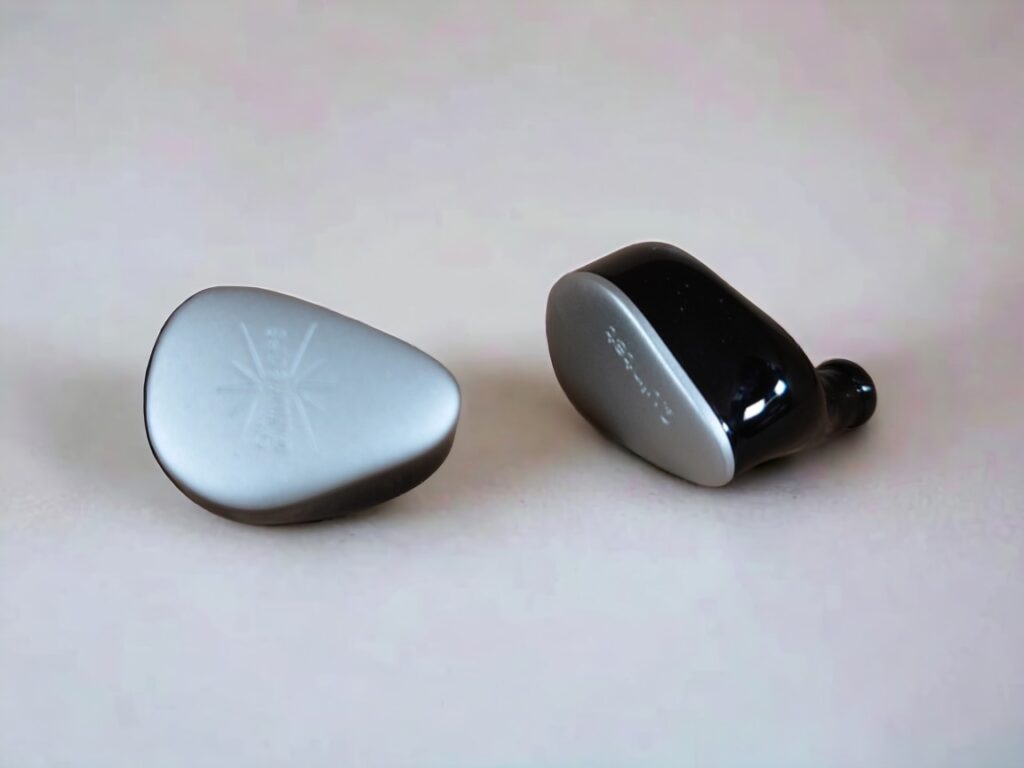
WRAPPING IT UP
Soundstage and Imaging
The soundstage is quite open and wide sounding, almost like with an open headphone. Soundstage depth isn’t impressive, which is typical for IEMs. Imaging is good but not exquisite. Layering and separation, however, is very good.
Bass
The bass is close to perfect. I don’t often use that word, but this is maybe the best bass I’ve heard in an IEM. It is great compared to anything, really. It’s not huge in quantity, but very tight, punchy, dynamic, transparent, textured, tactile and well balanced. Reaching deep with great control. 30 Hz sounds as clean as anything.
Midrange
The midrange is first of all clear and clean. It’s neutral and transparent. It’s you want a warm and lush mid-range, you must look elsewhere. I like warm and lush midrange, however, but have no problem appreciating the mids of the Kiwi Quintet.
Treble
The higher registries have sparkle and energy, there’s lots of detail and dynamics. Transients and sibilance are not a problem.
Sound signature, Dynamics and Detail Level
I find the Quintet to be very dynamic sounding across the board. The bass, the midrange and treble, they are all very dynamic and energetic sounding. Microdynamics and detail are also top notch.
The general sound signature is on the neutral side. This is not a bassy headphone, it’s not especially warm sounding, it’s not especially lush and sweet. I find it well balanced, clear and sharp, without becoming edgy.
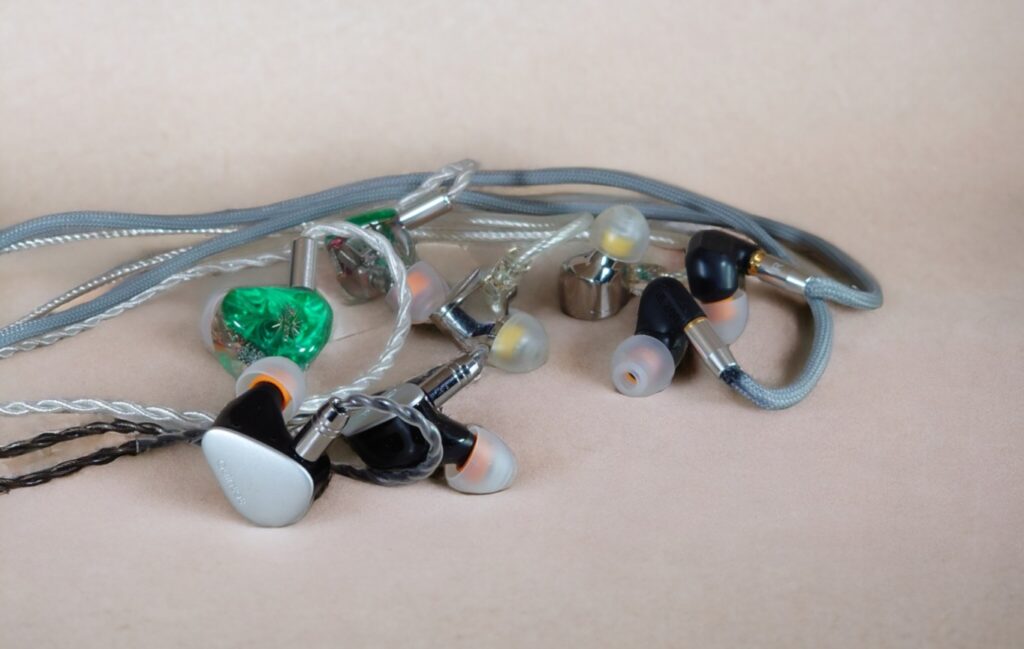
COMPARISONS
FIIO FH5S VS KIWI QUINTET
The Fiio FH5S and the Kiwi Ears Quintet have a lot of good things in common. They’re quite neutral sounding with a balanced sound signature. They both have a wide and open sounding stage, with good imaging. There’s lots of details across the board, but especially the bass stands out as quite exceptional on both. Dynamics are great, there is great macrodynamics (energy punch and slam) as well as microdynamics – the articulation of small detail and subtleties.
When it comes to the differences, the FH5S is slightly cleaner sounding but a bit drier. The Quintet is a tad more organic in its character. Even without the bass switch activated, the FH5S has a tad more bass than the Quintet.
MOONDROP KATO vs KIWI QUINTET
These two IEMs are very similar in many ways. The general sound signature and tonality is very close. The Quintet has a bit better transparency and detail, imaging and separation. The bass is tighter and punchier, the treble is a little bit more pronounced and detailed. Basically, the Quintet is for the most part a better “version” of the Kato, and hence fully justifies the price difference, with a good margin.
SENNHEISER IE200 vs KIWI QUINTET
First of all, both these IEMs are great sounding devices, they’re both among my favourites.
In terms of build and comfort, they are both very light and small, but the IE200 is the smallest. I do prefer the 2 pin connector of the Quintet to the IE200’s MMCX, though. I also like the cable with the Quintet better.
In terms of soundstage, the Quintet is more open sounding with better imaging. The Quintet is also more dynamic. The IE200 is still good in these respects, though, it’s just that the Quintet is even better. The detail level is in general higher with the Quintet, but the IE200 is no slouch here either.
The treble is smoother with the IE200, while it has more energy and articulation on the Quintet. The mid-range of the IE200 is on the warmer and thicker side, mostly in a very seductive way. The Quintet also has a great mid-range, but it’s more neutral and offers better definition. The bass is also tighter with the Quintet, with more texture and control.
IKKO OH10 VS KIWI QUINTET
These IEMs have a lot in common. They both have great imaging and bass, relatively smooth and highly detailed mids and clear highs. However, they also have a difference in tonal balance. The Quintet is quite neutral, the OH10 slightly V-shaped with the mids drawn back in the mix. Both are dynamic and snappy.
The OH10 is among my favourite IEMs, but it is very heavy. It’s still available but being replaced by the OH10S, which I have yet to hear.
KIWI QUARTET vs QUINTET
The Quartet has a remarkable bass. It’s significantly higher in quantity than that of the Quintet, especially deep down. The Quintet has a rather linear bass response, the Orchestra is boosted. On some tracks this will be really noticeable, on other tracks it won’t. You can, however, use the dip switch to adjust the bass down on the Orchestra.
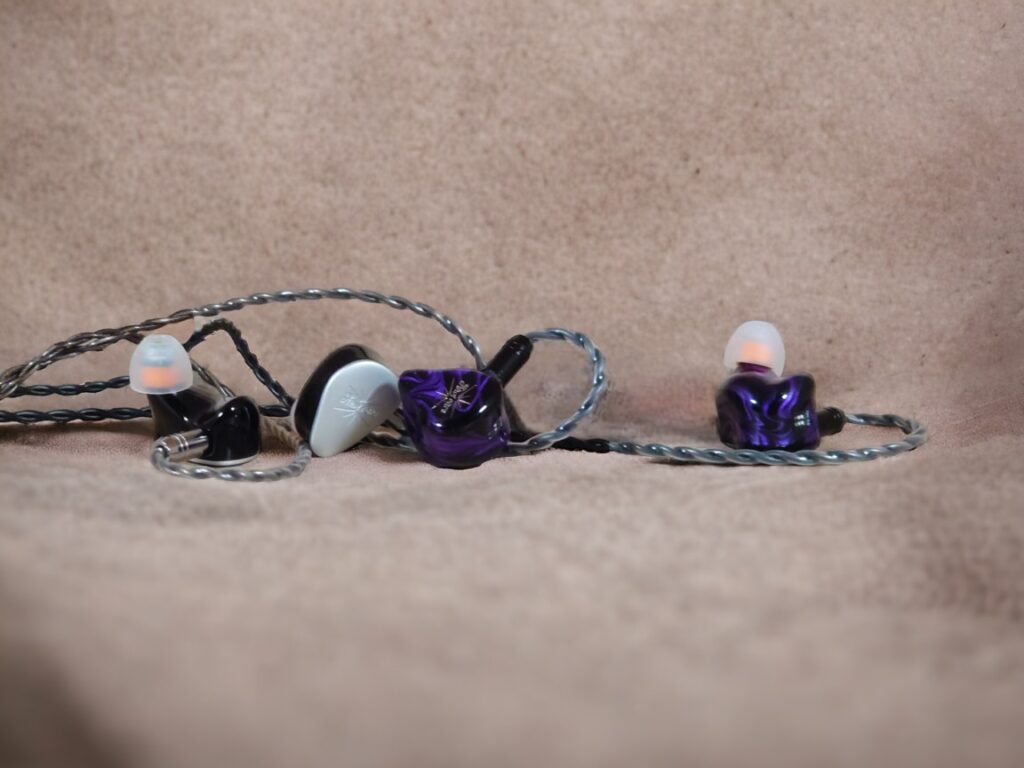
The Kiwi Ears Quintet and Quartet are different flavours: The Quartet is in its stock form quite bassy and has a warmer presentation with a smooth midrange and energetic treble. The Quintet is sharper cut and presents the music in a clearer, brighter and more upfront way with more air, detail and subtleties.
KIWI ORCHESTRA LITE vs QUINTET
The Quintet is relatively a bit brighter, crisper and punchier, the Orchestra Lite a bit smoother, more laid back and lush. They have similar soundstage and imaging although the Quintet feels a bit airier.
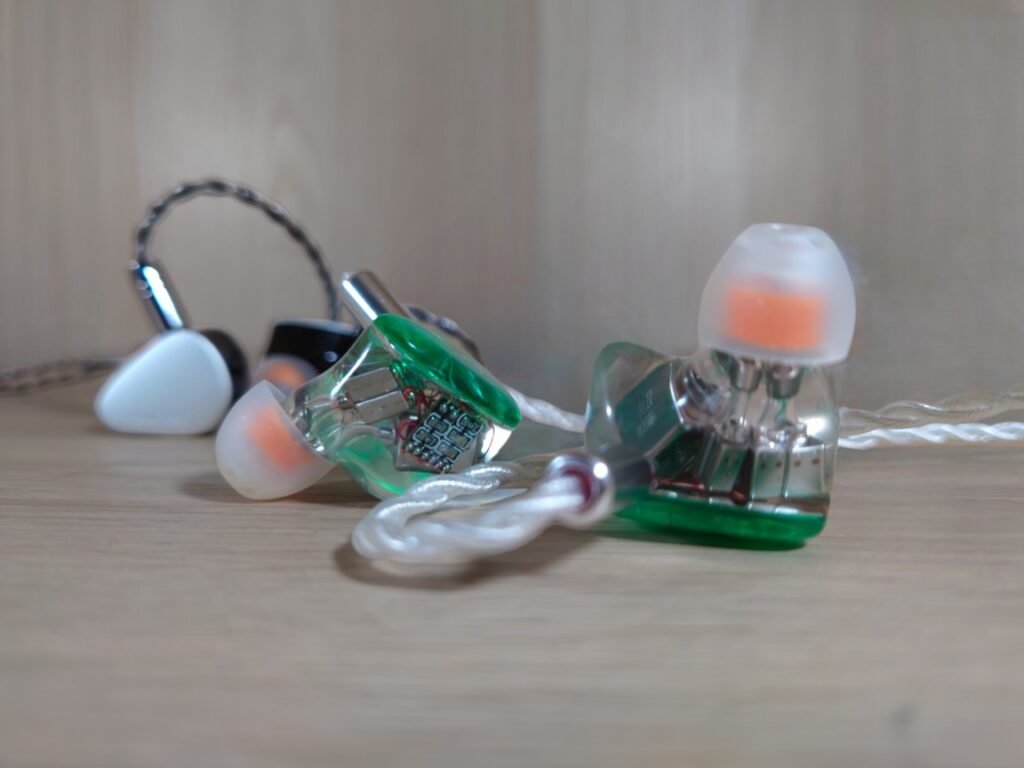
The treble of the Orchestra Lite feels smoother yet still very articulate. The Quintet is a bit more sparkly and even more detailed.
With regards to the midrange, the Quintet is somewhat more energetic and upfront, with more obvious texture. In direct comparison, the Orchestra Lite is smoother, a little bit lusher and more organic sounding.
When it comes to the bass, the Orchestra Lite is tight, feels well balanced and never becomes boomy. However, as good as the Orchestra Lite is, the Quintet has a fantastic bass.
In summary, the Kiwi Ears Quintet and Orchestra Lite are both great-sounding IEMs. Both are quite neutral sounding, they both have lots of detail, an open soundstage and a quite neutral and well-balanced sound profile where no part of the frequency spectrum feels exaggerated or recessed. I find the Quintet to sound a bit brighter, but not much. It also has a slightly stronger bass.
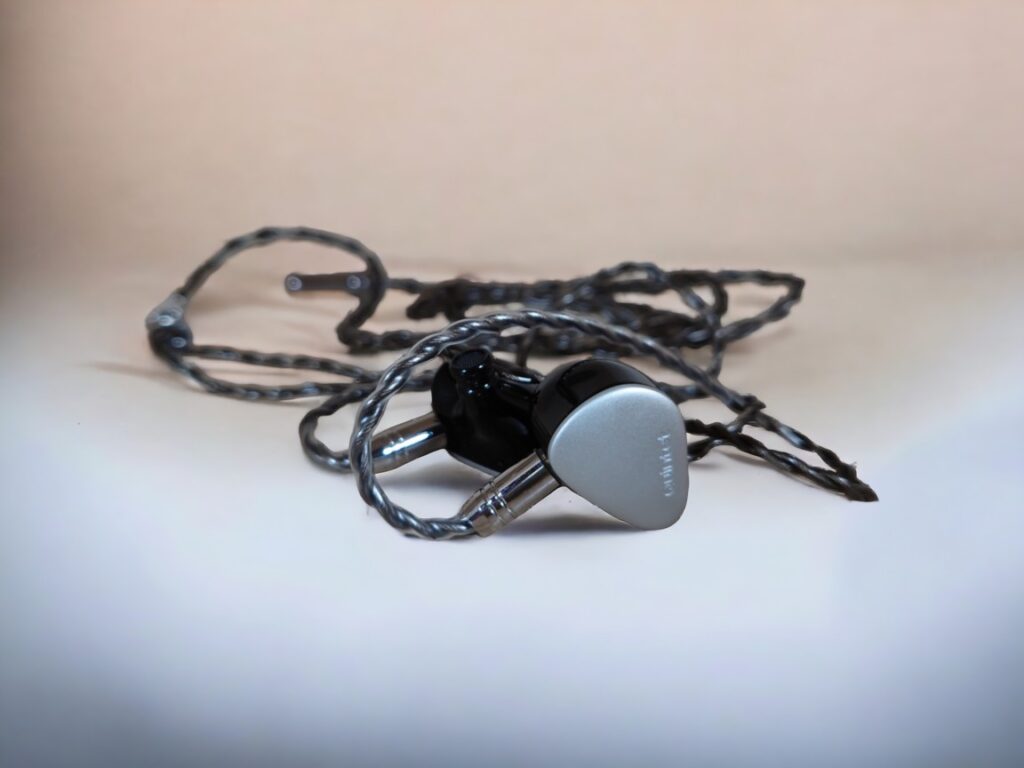
CONCLUSION
The Kiwi Ears Quintet offers an open soundstage and a neutral and well-balanced sound profile where no part of the frequency spectrum feels neither exaggerated nor recessed. It has lots of detail across the board.
The bass is exceptional. It’s well-balanced, textured and punchy, It’s very tight, punchy and dynamic. It feels tactile without getting bloomy or dominating the mix. It’s highly detailed with lots of texture. The bass of the Quintet is in a league above most IEMs.
The Kiwi Ears Quintet is an outstanding IEM and comes highly recommended.
Buy on Linsoul: Kiwi Quintet
Buy on Amazon: Kiwi Quintet
We make earnings through affiliate links and any purchase you make on Amazon or Linsoul clicking one of our links will give us a small provision at no cost to you.
We only get a provision for items that are not returned, so there’s no incentive for us to recommend something that’s not good.
Linsoul : Headphones, Earbuds, Wireless Earbuds, Desktop DAC/AMP, Portable DAC/AMP, Digital Audio Players,
Amazon: Headphones, IEMs, Headphone Amplifiers, Home Audio or Anything else.
.
If you enjoyed this article or other content on The Headphoneer, you might consider leaving a small donation to keep this website up and running. No donation is too small. Thanks for supporting us!
If you like our work please follow us on Instagram, Facebook and Twitter , it will help us grow. Sharing is caring 🙂


